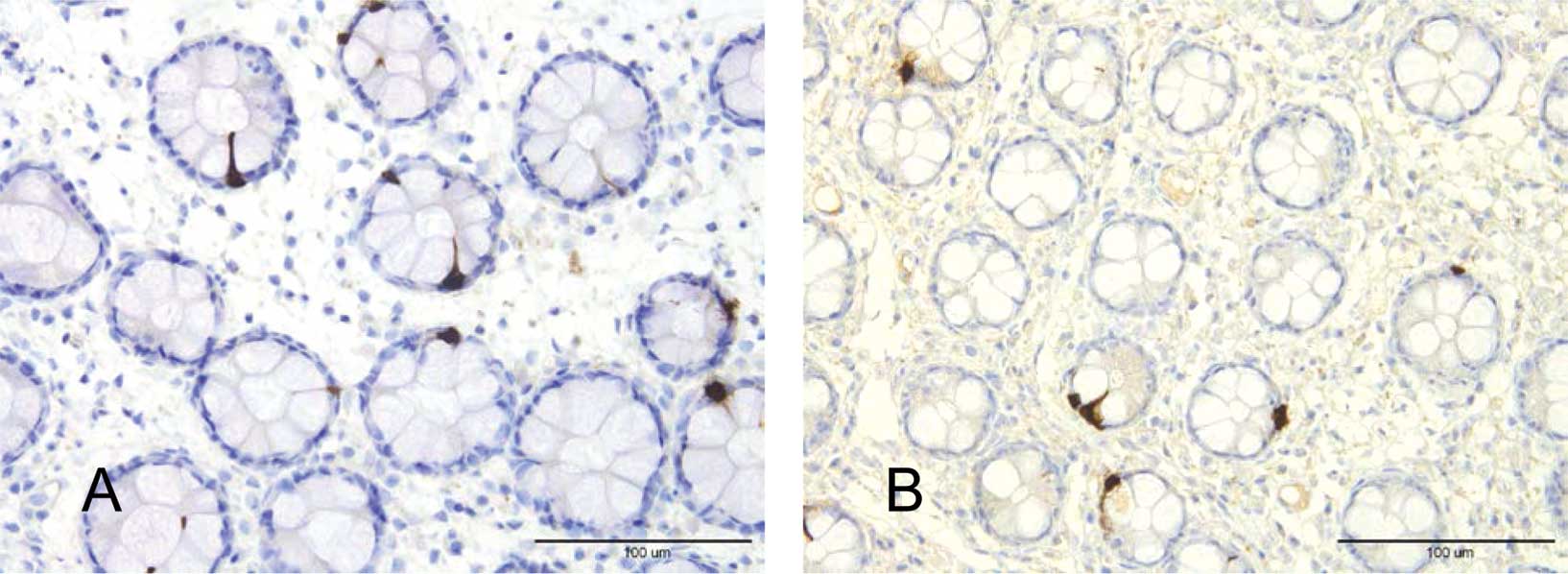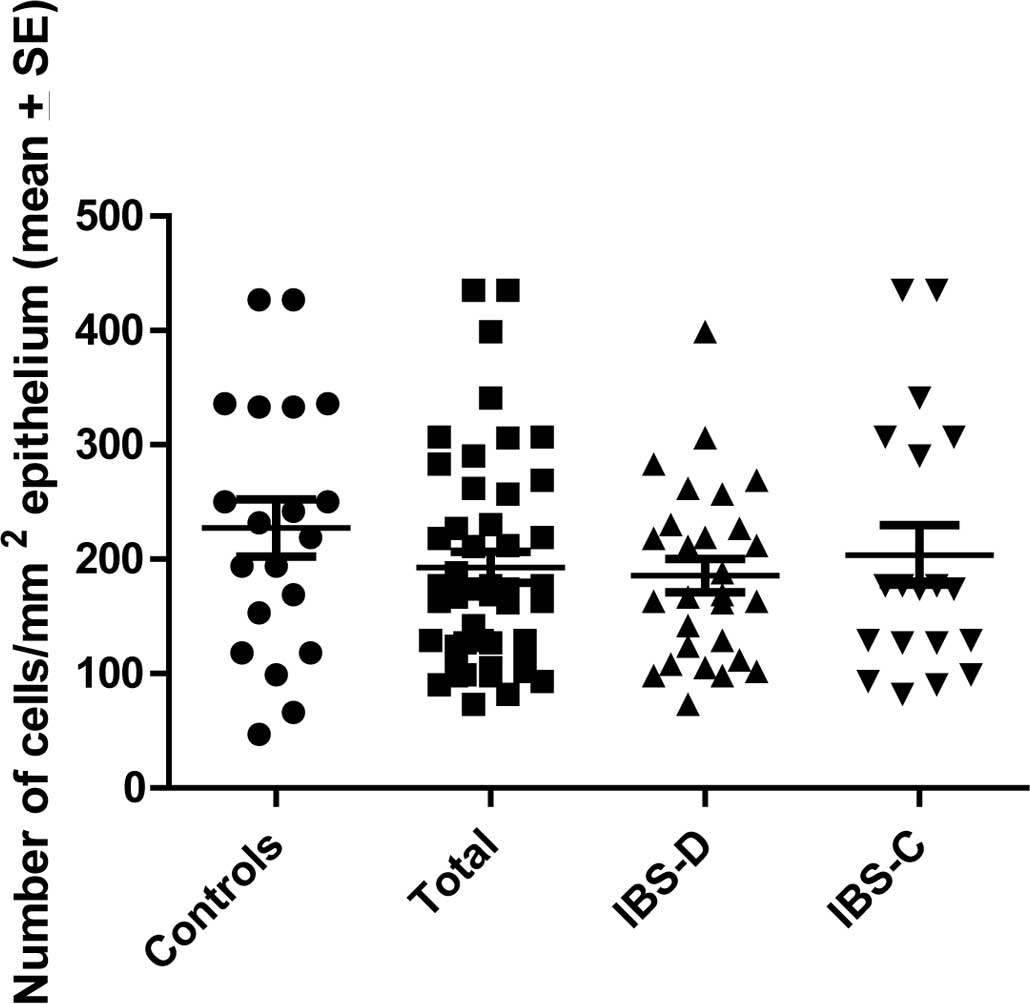Chromogranin A cell density in the rectum of patients with irritable bowel syndrome
- Authors:
- Published online on: September 18, 2012 https://doi.org/10.3892/mmr.2012.1087
- Pages: 1223-1225
-
Copyright: © El-Salhy et al. This is an open access article distributed under the terms of Creative Commons Attribution License [CC BY_NC 3.0].
Metrics: Total
Views: 0 (Spandidos Publications: | PMC Statistics: )
Total PDF Downloads: 0 (Spandidos Publications: | PMC Statistics: )
Abstract
In a previous study, chromogranin A (CgA) cell density in the colon of patients with irritable bowel syndrome (IBS) was found to be reduced. It has been suggested that intestinal CgA cell density may be used as a marker for the diagnosis of IBS. The rectum harbours a larger number of large intestinal endocrine cells and is more accessible for biopsies than the colon. The present study aimed at determining the CgA cell density in the rectum of IBS patients. A total of 47 patients with IBS that fulfilled the Rome Criteria III (39 females and 8 males; average age, 38 years) were included. A total of 28 patients had diarrhea (IBS-D) and 19 had constipation (IBS-C) as the predominant symptom. A total of 27 subjects that underwent colonoscopy with rectal biopsies were used as the controls. These subjects underwent colonoscopy due to gastrointestinal bleeding (the source of which was identified as haemorrhoids or angiodysplasia; 19 females and 8 males; average age, 49 years), or health worries. The rectal biopsies were immunostained for CgA and quantified by computer image analysis. The CgA density in the controls was 206.3±22.2 (mean ± SEM), in all IBS patients 190.2±14.3, in IBS-D patients 188.8±14.7 and in IBS-C patients 195.3±34.1. There was no statistically significant difference between the controls, IBS, IBS-D or IBS-C patients (P=0.5, 0.5 and 0.7, respectively). The present study showed that although the rectum comprises the same endocrine cell types as the colon, attention must be paid when drawing conclusions regarding the whole large intestine from studies carried out on the rectum. This particularly applies when endocrine cells are investigated. As CgA cell density represents the total endocrine cell content of the rectum, changes in specific endocrine cells in IBS patients cannot be excluded.











